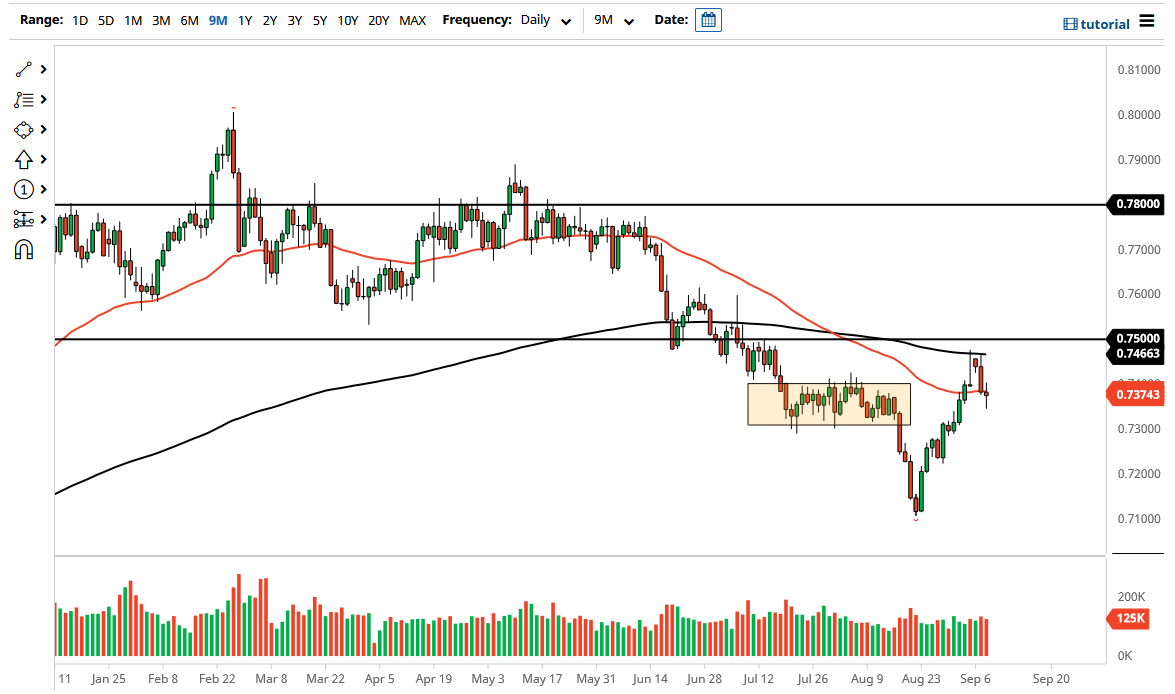The Australian dollar chopped around and did as much damage to accounts as it could on Wednesday as we ended up forming a neutral candlestick around the 50-day EMA. This is also right in the middle of the consolidation area that we had recently broken out of, so while it does suggest that perhaps there are going to be buyers in this general vicinity, the reality is that the candlestick does not leave much in the way of clarity quite yet.
If we could break above the top of the candlestick, it would be a continuation of the recent rally. However, you should keep in mind that the 200-day EMA has come into the picture, and should therefore offer quite a bit of resistance. The question now is whether or not we will continue to go lower, or if we will bounce to retest that area again. I suspect that based upon the recent action, we will probably bounce and stick between these two moving averages. The reason I say this is that the markets have absolutely no clarity at the moment, and I just do not know that that will change anytime soon.
I do not mean to sound so pessimistic, but markets have no idea what to do. Central banks around the world continue to look extraordinarily loose with monetary policy, and we have seen attitudes change at the drop of hat, and the Federal Reserve is light years away from raising interest rates. Although that worked against the value of US dollar, we have seen several central banks since then suggest that they are not necessarily going to get tight anytime soon as well. Because of this, the market is likely to see more volatility as central bankers are adding fuel to the fire, not giving guidance.
If you have noticed more volatility in the currency markets, and have had trouble reading charts, you can lay that firmly at the feet of central bank officials that clearly have no idea what is going to happen next. With uncertainty comes volatility and choppiness, and this pair is an excellent demonstration of that. Keep in mind that this pair is highly sensitive to risk appetite, so you need to be aware of whether we are “risk on”, or “risk off.”

